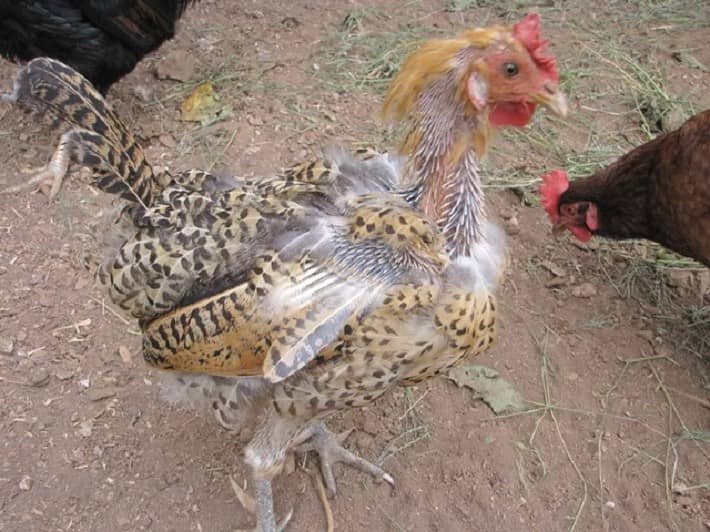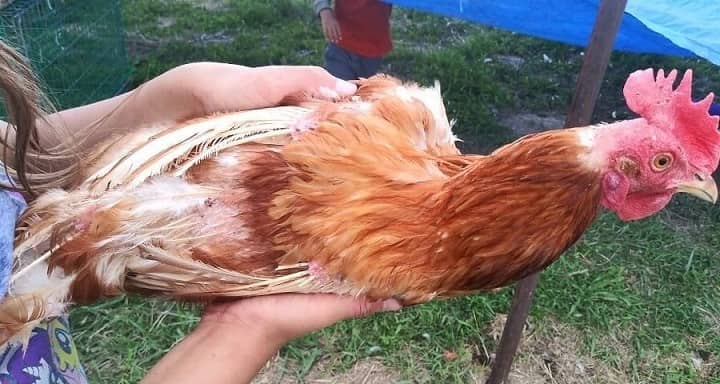Raising chicken is a rewarding job that most people from different parts of the world have embarked on. However, to reap big from your chicken farming, you need to take care of them from the time they hatch until they become full-grown chicken. Taking care of chicken can be hectic, but it is highly rewarding once you complete everything as required.
Chicken mature fast; it takes a few weeks to notice many changes on their bodies. The color of their feathers will change. At this time, they will become independent, wandering around to search for food themselves.
As like for other birds, the chicken feathers are analogous to their skin. The feathers act as a great deal of wear in birds. Feathers don’t last on their bodies for a lifetime; they will shed off and get replaced by new ones over time. Shedding of feathers and replacement by new ones is what is referred to as molting in chickens. This is a common thing, but most people haven’t completely understood the whole phenomenon about it at large.

All chickens experience a complete molt once a year. The stage usually starts after the breeding period in adult chickens. Most people refer it as a chicken problem, but then, this is a common thing. If you notice that your layer chicken production rate has gone down, or they have completely stopped laying eggs, you ought to observe its molting pattern at large.
You can easily tell that your chicken is at the molting stage. At this time, most parts will be bare skin. There are chickens that will stop laying eggs, and others will continue still. Those that continue laying eggs will experience molting for an extended period to those that stop to give room for molting.
A flock composes of early and late molters. Late molters are the best layers for those who need to domesticate chicken purposely for eggs. Early molters will lay eggs for a short period and stop producing when they start molting. Early molters will regrow smoother feathers compared to late molters.
Since this is a common thing, you shouldn’t develop worries about it. The regrowth process is consistent, and your chicken will grow new feathers.
How Long Does Molting Take To Complete?
Usually, early molters are disadvantageous again. They take about four to six months to recover from this problem. Late molters, on the other hand, take short periods to recover; they usually take about two to three months to get a new look. Late molters will start laying egg quickly since the stage comes almost the same time thereby shortening molting.
The Signs Of Molting In Chickens
This is a common occurrence in chickens. It is easy to tell a chicken is molting. Below are five signs of molting;
- The chicken starts developing a dull comb
- You will note some bald spots
- Your chicken will cease to lay eggs or reduce its production
- There will be a change in mood
- Increased protein appetite
The Common Causes Of a Molt In Chickens
- Stress
- A complete cycle of laying eggs
- Limited daylight
Can a Change in Diet Trigger This Problem?
Different things can trigger molting. Mostly, it starts due to changes in climatic conditions. Diets can also accelerating molting. Change in the diet was a past method people used to force their chicken into molting and improve their quality. However, this is something of the past, and it can cause a lot of problems if you try to force your chicken to molt.
Does It Happen To All Chickens?
This is a common happening to all chickens both the hens and rosters. Molting occurs depending on the amount of daylight your chickens get exposed to. Some will molt during spring and others fall. However, the broody hens start to molt after raising their chicks. This is the time they will lose old feathers and regrow new ones.
Molting Stages
Chickens molt in different stages of life. Chicks will go through four molting stages before they mature. Molting in chicks starts in the 1st week to the 6th week, the next starts at the 7th and 9th week. The last two stages happen at the 12th and 13th week and lastly the 20th and 22nd week. At maturity, they will molt twice a year throughout their lifetime.
Is Molting a Painful Problem?
Yes, this is a painful stage to chicken. Feathers have a vein shaft connection to the body. The newly regrown feathers will bleed if they get injured. For this reason, they need free space to wander around to prevent their sensitive young feathers from getting touched.
Is Molting Deadly?
During the molting stage, the immune system of your hens gets weak. An extended period of starvation makes them more susceptible to common hen diseases like salmonella. This is a deadly disease that can lead to death if you don’t handle the problem early.
The Order Chickens Lose Feathers

Molting happen slowly; feathers will shed from one part to the other. Usually, the shedding will start at the head and neck. It will follow to the breast, body, wings and end with the tail. At the wings, the outer feathers will shed and then the secondary feathers. The early molters will shed feathers one at a time while the late molters shed in groups or pairs.
If you are a beginner poultry farmer, it will be difficult identifying the best layers from your big flock. If you go to purchase laying chicken, always ask the seller the molting patterns of the hens you intend to purchase. This way, you will get the best chicken to serve your intended needs.
Tips To Keep Chicken Healthy During The Molting Season
Molting involves hormonal changes in chickens. You need to look for ways to ensure you maintain your hens healthy during the entire period.
The feathers are made up of protein. During molting, laying eggs will cease or slow down due to the demand to metabolize enough protein to serve both for feather and egg production. At this time, you need to feed you chicken feeds comprised of sufficient quality nutrients. A quality diet will help to replace lost feathers, maintain conditioning and energy at large.
Below is a table to guide you on the protein content you should feed your chickens.
Some High Protein Foods For Molting Chicken
Out there, there are a lot of protein-rich treats you will provide your chicken to boost their immunity during the molting stage. They include meat and fish scraps, sunflower seeds, soybeans, flax seeds, scrambled eggs, mealworms, and peas.
Always ensure you don’t interfere with the natural processes of the chicken during the molting stage. You should only get concerned to provide its body system with essential vitamins and proteins at large. These are the essential nutrients to give the chicken sufficient energy and boost immunity.
Mostly, molting in adult chickens starts typically during the spring and fall seasons. The amount of daylight at this time is low and there is also shortened daylight. There will be reduced feeding time, leading to consequential loss of body weight. Your chicken requires high levels of energy to combat physical exhaustion.
The chicken body needs to build enough nutrient reserves to get them through this process quickly. Indulge them in correcting supplements and feeds into their bloodstreams and also ensure you provide them fresh water.
Freshwater Supplements For Molting Chicken

Garlic
This is an essential supplement during molting to give your chicken. The supplement helps the chicken to grow shiny and smooth feathers. You will add garlic into their drinking water and allow it to stay for about 24 hours before you give your chicken.
Apple Cedar Vinegar
Chickens develop a weak body system during the molting period. They will experience problems to digest proteins at large. For this reason, apple cedar vinegar comes in as an alternative to solve this problem. Use this supplement, together with high calcium foods and problem digestion, will be solved.
Other Essential Nutrients
There are other nutrients that boost growth of healthy feathers during molting. They include amino acids, vitamin E, and zinc. Amino acids accelerate the regrowth process your chicken to recover quickly from molting.
Vitamin E nutrients are also important to chicken during this stage for several reasons. This nutrient helps the chicken to maximize its immune response. They are also responsible to prevent feather abnormalities that usually occur when new ones starts to grow.
Biotin and zinc are also crucial to chickens at large. These nutrients are not readily available in chicken feeds. You need to look for alternatives containing these nutrients to feed the chicken. Biotin and zinc influence the formation of feathers and strong bones.
You can boost the immune system of your molting chicken using a mixture of bi-flavonoids and seaweed. These products add iodine in the body and it is essential for maximum absorption of nutrients. Sufficient nutrients in the system help the chicken to gain more weight to recover from molting quickly. Seaweed, on the other side, helps to improve the York color of the eggs. Your chicken will also remain healthy to lay eggs with strong shells after the molting stage.
Stress is also a key factor that leads to molting. At this time, you need to provide your chicken minimal stress to enable them to recover quickly. You can do a lot of things to improve the stress levels of your chicken. They include:
- Providing your chicken more room
- Separating them from the rest
- Handle them careful
- Ensuring other chickens do not harass them
Can You Stop Molting From Happening?
Most people have always asked this question, but they haven’t gotten a clear answer for it as such. Molting is a normal occurrence, and it is not possible to stop it. However, there are a lot of ways you can speed up the process your chicken to recover quickly.
Ways To Speed Up The Molting Process
Molting is a painful stage for chickens. You can relieve them this stressful stage by looking for best alternatives to ensure new feathers grows quickly. Apart from feeding them required nutrients in this stage, below are other habits you should get into to ensure new feathers grow faster. Some ways include;
- Ensure you maintain their living space always clean and well ventilated
- Prevent them from too much scratching to search for food
- Reduce the amount of carbs intake.
Are There Other Ways Chicken Shade Feathers Other Than Through Molting?
Yes, chicken can shed feathers if they develop a certain disease, or they get attacked by parasites. The common parasites attacking chicken are the lice and mites. Farmers always need to inspect your chicken and their living houses for a possible infestation. Ensure you get rid of the infestation if any, and prevent it from happening again by maintaining their living homes clean.
What You Can Do With Molted Feathers
Since molting is an annual occurrence to your flock, you might get surprised whether there is a use for molted feathers or not. All chicken wastes are a source of nutrients to our plants and vegetation. As the chicken shed feathers, you need to gather them and place them in a compost pile. The feathers are rich in nitrogen content; you will allow them to decompose and feed your plants with the nutrients.
Conclusion
You have learnt what is molting and what it means to your chickens. This is the most stressful stage in chicken, and poultry farmers need to struggle their level best to help them get out of these stressful moments quickly. You need to provide your flock quality nutrients and also ensure they live in a stress-free environment. This way, you will give them all the necessities they require for recovery.
